14 Trigger Finger Exercises To Relieve Pain
Simple exercises you can do regularly to reduce the pain and regain proper mobility.
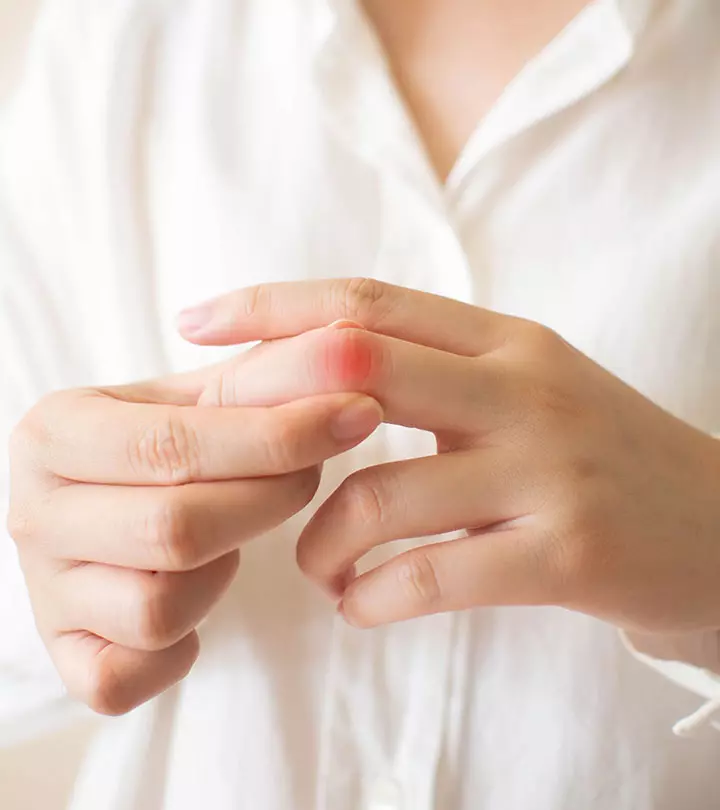
Image: Shutterstock
Trigger finger exercises help reduce finger pain caused by excessive time typing and are especially important if you have a desk job or one that involves gaming or typing on the phone for prolonged periods. When your fingers remain bent (flexed) and contracted as you type for long time periods, the tendonsi A fibrous connective tissue that works to join bone and muscle, like the fibers that join muscles to eyeballs. around your finger muscles become inflamed and stiff, causing trigger finger. Trigger finger pain prevents you from using your fingers through their full hand range of motion to grab objects or move them freely; simple tasks and daily chores can become difficult.
Certain finger exercises can help to reduce trigger finger pain and regain finger and hand mobility. Take 15 minutes every day to do these 14 easy trigger finger exercises. They will help the finger tendons elongate and recover faster, and you will be able to do daily tasks without assistance.
But first, here’s what you should know before beginning to exercise your fingers.
- What Causes Trigger Finger?
According to the American Academy Of Orthopedic Surgeons, trigger finger is a condition that causes pain, stiffness, and a locking sensation when you bend and then straighten your finger (1). Although it can affect all fingers, it is more common in the ring finger and thumb. Trigger finger occurs when the flexori Either of the muscles used to bend the elbow or knee by reducing the angle between the bones on either side of the joint. tendons in your fingers become inflamed from chronic overuse. Tendons attach muscles to bones. Your fingers have several small bones, which are also attached to bigger muscles in your arm via the tendons. When the muscles contract, the tendons transfer the force from your muscles and pull on your bones.
The flexor tendons run from your forearms to your hands through a tunnel-like sheath called the flexor tendon sheath. When the flexor tendon sheath narrows, the movement of the flexor tendons become restricted. This leads to inflammation in the flexor tendons and trigger finger, causing pain and difficulty in moving your fingers freely.
The condition may develop due to numerous reasons, such as age, gender, and repetitive hand motions. Research suggests that it may occur before the age of 8 in children or between the ages of 40 and 50 in adults. However, it is more common in adults. Its risk factors may also include certain medical conditions like diabetes, carpal tunnel syndrome, rheumatoid arthritis, gout, and thyroid (2).
As per the American Society For Surgery Of The Hand, a trigger finger could become a trigger thumb if the tendon enlarges (3). Some common symptoms of trigger fingers are pain, swelling, and mechanical symptoms like locking or catching of fingers, stiffness, and/or loss of motion.
 Did You Know?
Did You Know?- Which Muscle Do Trigger Finger Exercises Target?
Trigger finger exercises are designed to release and stretch the flexor tendons that run from your forearms to your hands. They work your finger extensors, which straighten your fingers and counter the chronic flexion in the flexor tendons.
- What Equipment Do You Need To Do Trigger Finger Exercises?
None at all! Some exercises may require an elastic band or small objects like coins.
- How Can You Benefit From These Exercises?
These hand rehabilitation exercises offer a natural treatment for jammed fingers. It can help reduce hand and finger pain and inflammation that results from too much typing which can restrict movement in fingers.
You will be able to move your fingers and hands freely.
You will be able to hold, grasp, form a fist, type, and do other day-to-day work without assistance or pain. In turn, this can lead to reduced anxiety, improved mood, and a better quality of life.
Now, you are all set to start with the finger and hand exercises. Let’s begin!
 Workout Blueprint: Trigger Finger Exercises
Workout Blueprint: Trigger Finger Exercises- Frequency: Daily
- Benefits: Relieve pain and inflammation and improve finger and hand mobility.
- Equipment Needed: Softball, elastic band, coins, paper.
- Space Required: Small area
- Assistance Required: No
- Who Should Avoid: Anyone who experiences extreme pain or discomfort during the exercises.
In This Article
14 Trigger Finger Exercises For Pain Relief
1. Finger Extensor Stretch
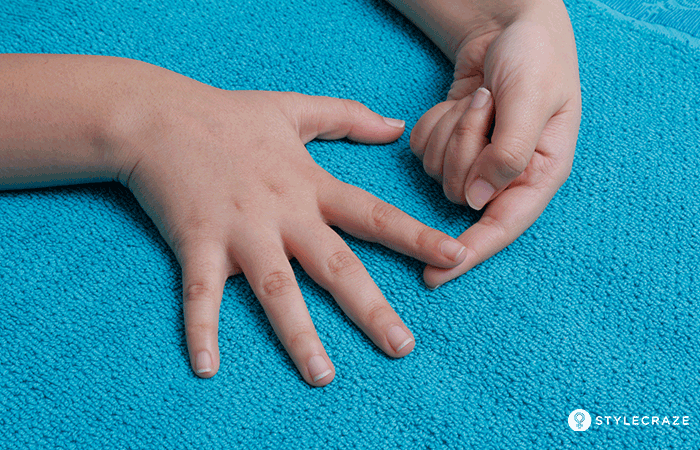
How To Do
- Keep your hand flat on a solid surface.
- Hold the affected finger with the index finger of the other hand.
- Gently and slowly, pull the affected finger upward, keeping your finger as straight as possible and your palm flat.
- Pull it as far as you can without pain.
- Hold it for 5 seconds and then release.
- Do this hand therapy for the other 4 fingers.
Sets And Reps
2 sets of 6 reps, three times a day.
2. Finger Lifts
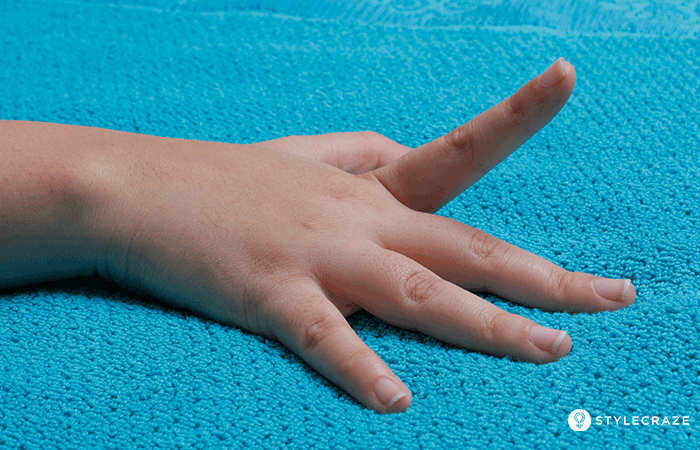
How To Do
- Place your palm flat on a table.
- Lift your fingers (as far as possible) one by one. Keep your fingers straight and palm flat on the table.
Sets And Reps
Do 2 sets of 6 reps, three times a day to improve hand dexterity.
3. Tendon Gliding
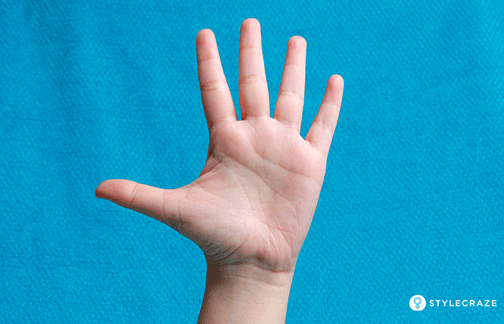
How To Do
- Fan out (stretch) your fingers as much as you can. Stretch your palm a little. This is the starting position.
- Bend all your fingers except your thumb and touch the bottom of your palm.
- Extend your fingers slowly, one section at a time, to return to the straight starting position.
- Again, bend all your fingers except your thumb and touch the middle of your palm.
- Bring your fingers back to the starting position.
- Touch all your fingertips with the tip of your thumb.
- Again, spread your fingers out and stretch them as much as you can.
- Finally, touch the base of each finger with your thumb.
Sets And Reps
3 sets of 4 reps, three times a day.
4. Finger Spread
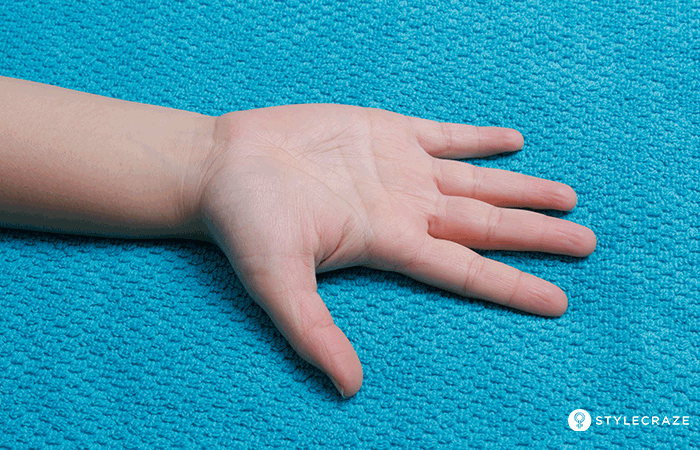
How To Do
- Place the back of your hand flat on a table so your palm is up.
- Make a fist and open it. Stretch your fingers open as much as you can. Keep your hand flat on the table.
Sets And Reps
3 sets of 12 reps, three times a day.
5. Object Pickups
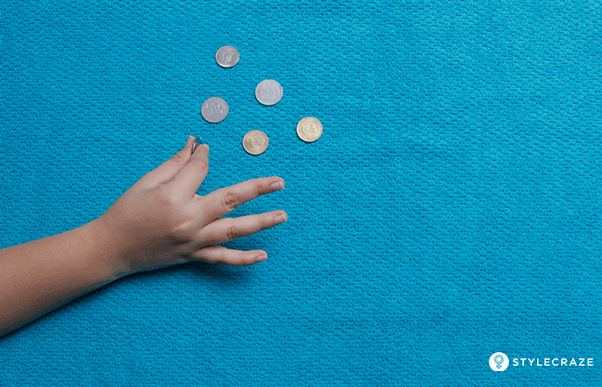
How To Do
- You would need coins, bottle caps, pencils, and/or other small objects on a table for this exercise.
- Pick up each object carefully, one by one, and place them on the other side of the table. Grasp each object with 2 fingers.
- Pick up each object again and return it to the starting position.
Sets And Reps
Do 2 sets of 5 reps, two times a day for better hand coordination.
6. Palm Presses
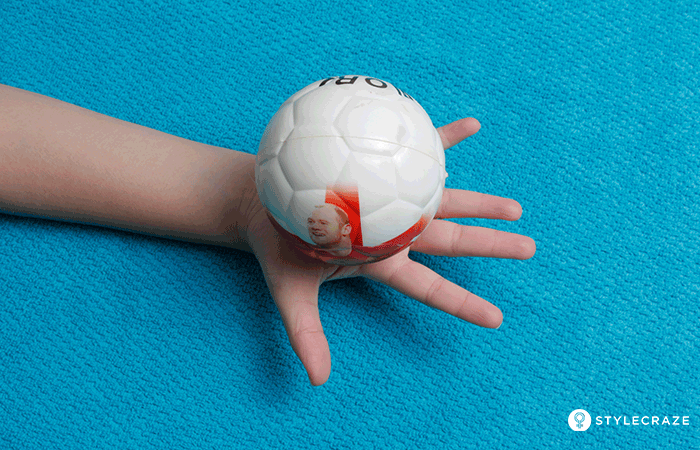
How To Do
- You would need a small softball for this exercise.
- Place the ball in your palm with your fingers fanned out.
- You may support your hand by placing it on a table.
- Bring your fingers closer and grasp the ball.
- Squeeze and hold for 3 seconds.
- Release the hold and fan out your fingers as straight as you can, without moving your wrist.
Sets And Reps
2 sets of 5 reps, three times a day.
Gina Weibel, a blogger and music teacher, sought playful ways to enhance finger strength in her daughter. She turned everyday items into engaging tools for finger exercises. Describing the activities, Gina writes, “My daughter holds a ball of dough in her hand and when I say a finger number (or roll a die), she squishes only that finger deep into the dough (i).” Additionally, she utilizes a bulb syringe and spray bottles for diverse finger workouts.
7. ‘O’ Exercise
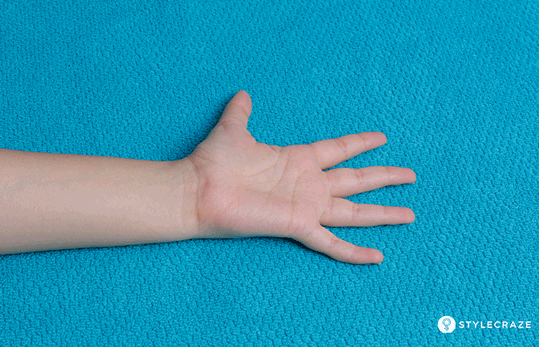
How To Do
- Touch the fingertip of the affected finger with the tip of your thumb to form an ‘O.’
- Hold it for 3 seconds and then fan out your fingers as straight as you can.
- Repeat with all the affected fingers.
- Try to keep your wrist still throughout the exercise to isolate your fingers.
Sets And Reps
2 sets of 6 reps, three times a day.
8. Thumb Extension (Using An Elastic Band)
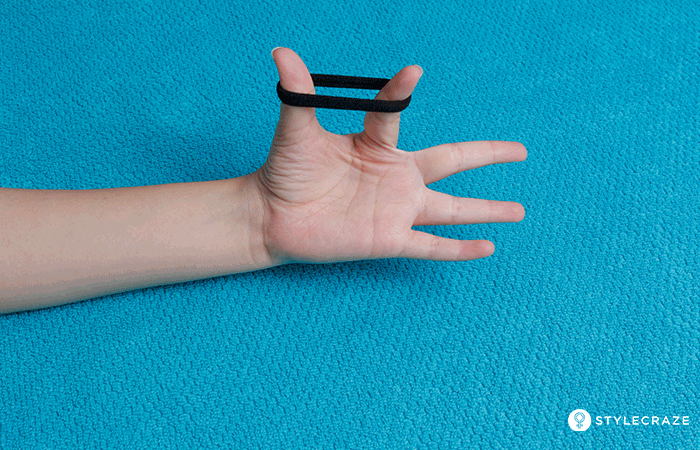
How To Do
- Hold a small elastic band with your thumb and index finger.
- Hold the opposite end of the band with the affected thumb.
- Push the thumb back and extend the band.
- Hold it for 2 seconds and release with control.
Sets And Reps
3 sets of 8 reps, three times a day.
9. Paper Or Towel Grasp

How To Do
- Place a small towel or a sheet of paper on a table.
- Place your hand on the table so that your affected hand is on top of the towel or the paper.
- Form a fist slowly and scrunch the paper or the towel.
- Squeeze the towel or the paper for 3 seconds. Keep your shoulder down to isolate the work in your hand.
- Open your fist slowly and fan out your fingers, stretching them as much as you can.
Sets And Reps
3 sets of 12 reps, two times a day.
10. Finger And Hand Openers
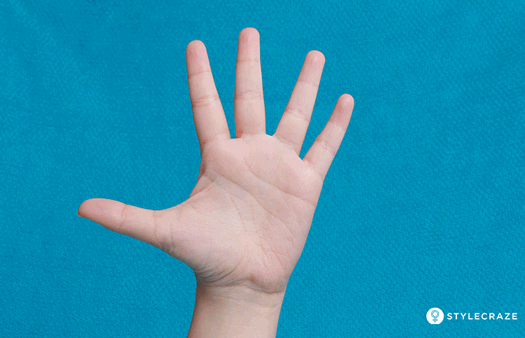
How To Do
- Massage the base of the affected finger for about 15 seconds.
- Make a fist by bringing all your fingers close together.
- Open your fist and straighten your fingers.
- Close and open your fist for 30 seconds.
- Fan out your fingers, support the back of the affected finger with the index finger of the other hand.
- Touch the affected finger to the palm.
- Release.
- Do this 15 times.
- Alternate between the two exercises.
Sets And Reps
3 sets of 6 reps, two times a day.
11. Finger “V” Stretch
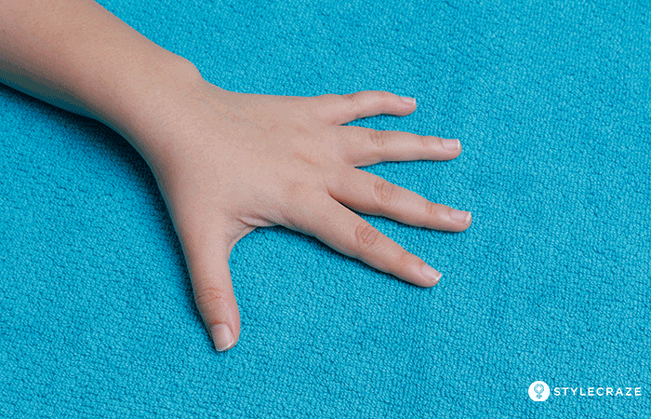
How To Do
- Place your palm flat on a table.
- Fold your thumb, ring finger, and little finger.
- Fan apart your index and middle finger (forming a ‘V’) and then bring them close together, keeping your fingers straight.
Sets And Reps
3 sets of 8 reps, three times a day.
12. Finger Stretches (Using An Elastic Band)
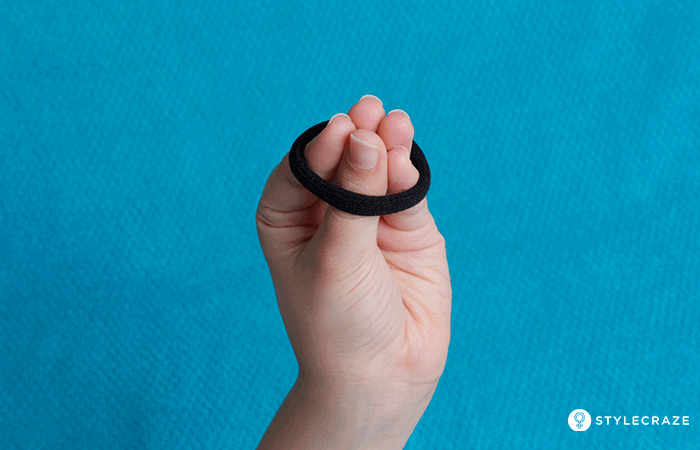
How To Do
- Pinch your fingers and thumbs together.
- Put an elastic band around your fingers, just below your knuckles. This is the starting position.
- Stretch your fingers away from the band slowly as far as you can without pain.
- Return to the starting position with control.
Sets And Reps
2 sets of 6 reps, three times a day.
13. Finger Abduction 1
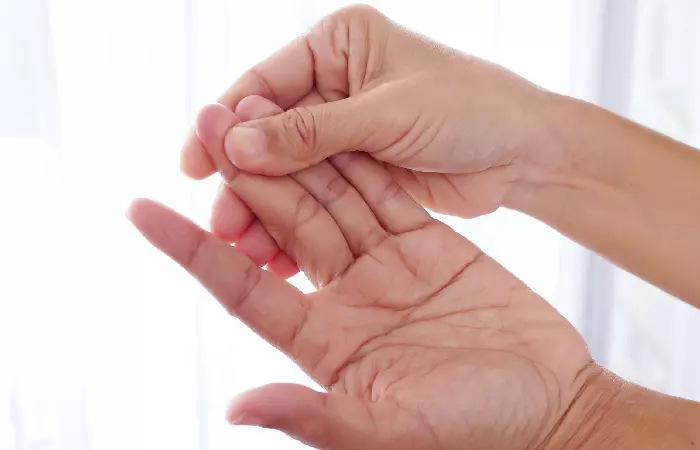
How To Do
- Position one hand in front of you.
- Extend the affected finger and the finger next to it.
- Gently press the two fingers with the thumb and index finger of the other hand.
- Apply slight resistance with the thumb and the index finger to separate the two fingers.
- Hold it for a few seconds and return the fingers to their initial position.
Sets And Reps
1 set of 5 reps, three times a day.
14. Finger Abduction 2
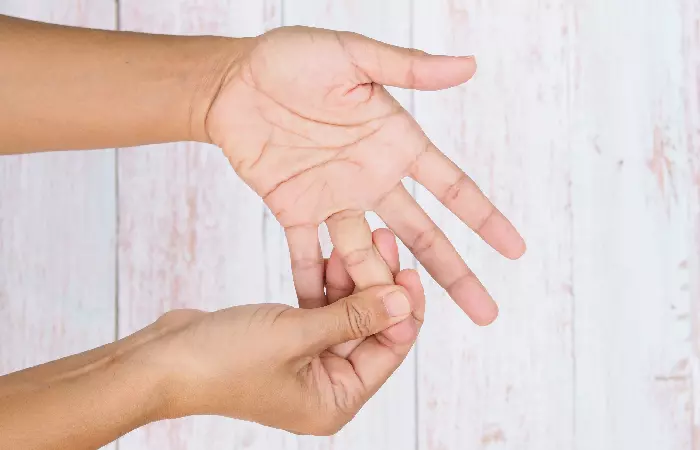
How To Do
- Spread the fingers in a way that the affected finger forms a “V” shape with the finger next to it.
- Push these two fingers against the rest of your fingers with the index finger and thumb of your opposite hand.
- Apply gentle pressure to bring the two fingers closer.
Sets And Reps
1 set of 5 reps, three times a day.
Trigger finger exercises are not time-consuming, and you can do them anytime, anywhere. They are beneficial for all of us who spend lots of time typing on phones and computers. However, seek medical advice right away if you notice persistent or increased pain and swelling despite these exercises. Scroll down for some other things you should keep in mind.
Key Takeaways
- Inflammation of the finger flexor tendons causes trigger finger, which causes pain and difficulty in moving your fingers.
- Finger extensor stretches and palm presses are some simple exercises that can help relieve the pain.
- Stay consistent with these exercises to notice pain relief and improved mobility.
- Stop doing these exercises if the pain increases and consult a doctor.
Points To Remember
- Take any prescribed medicines regularly along with exercising your fingers.
- Stop exercising if the pain increases and talk to your doctor immediately.
- Gently massage your hands regularly.
- Take breaks from typing to elongate your fingers and stretch your wrists.
 Quick Tip
Quick TipLearn the most effective and proven strategies, exercises, and treatments to heal trigger fingers from the video. Get the relief you need and start feeling better today!
Infographic: Top 5 Exercises To Relieve Trigger Finger Pain
Trigger finger exercises can help improve finger mobility and reduce pain or stiffness associated with the condition. If you have been diagnosed with the condition, it is better to spend at least 10-15 minutes performing the exercises. The infographic below covers the 5 simplest ones you can get started with. Check it out!

Illustration: StyleCraze Design Team
Excessive typing can lead to trigger finger pain which can get serious if not taken proper care of early on. Trigger finger exercises help relax the tendons of your fingers, reduce the pain and regain proper mobility. Finger lifts, tendon gliding, palm presses, and finger stretches are a few exercises that work on both finger and hand flexibility and mobility. Just 15 minutes a day would help you get relief from trigger finger pain.
Frequently Asked Questions
What is the best thing to do for a trigger finger?
Avoiding activities like gripping, stopping the usage of vibrating handheld machinery, wearing a splint, and performing a few stretching exercises can help relieve a trigger finger.
Can you fix your trigger finger naturally?
Yes, if the trigger finger and associated pain are manageable. Wearing a splint, OTC medications, rest, and stretching exercises help in fixing your trigger finger naturally.
Is the trigger finger a form of arthritis?
No, the trigger finger is not a form of arthritis. Trigger finger is a tendon problem and arthritis in fingers is a joint problem. There is no connection between the two.
What vitamin deficiency causes the trigger finger?
A trigger finger is caused by a severe deficiency of Vitamin B6. It causes weakening of the muscles and tendons around the fingers leading to the trigger finger (4).
Does the trigger finger ever go away?
Trigger finger might get cured in a while but it can also recur after some time if the pressure on the fingers increases.
Is trigger finger a form of tendonitis?
No, the trigger finger is not certainly a firm of tendonitis. Trigger finger happens due to improper functioning of tendons whereas tendonitis is when a tendon swells after a tendon injury. The severe level of the trigger finger might be a form of tendonitis.
Can a lack of estrogen cause a trigger finger?
Yes, As per anecdotal evidence, a lack of estrogen might cause a trigger finger. Lower estrogen levels cause swelling around the tendons, resulting in a trigger finger.
Personal Experience: Source
StyleCraze's articles are interwoven with authentic personal narratives that provide depth and resonance to our content. Below are the sources of the personal accounts referenced in this article.
i. Finger Strength Achieved Through FUN!https://makingmusicianslpm.blogspot.com/2014/10/finger-strength.html
References
Articles on StyleCraze are backed by verified information from peer-reviewed and academic research papers, reputed organizations, research institutions, and medical associations to ensure accuracy and relevance. Read our editorial policy to learn more.
- Trigger Finger
https://orthoinfo.aaos.org/en/diseases–conditions/trigger-finger/ - Trigger Finger
https://www.ncbi.nlm.nih.gov/books/NBK459310/ - Trigger Finger
https://www.assh.org/handcare/condition/trigger-finger - Response of vitamin B-6 deficiency and the carpal tunnel syndrome to pyridoxine
https://www.ncbi.nlm.nih.gov/pmc/articles/PMC347366/pdf/pnas00462-0420.pdf
Read full bio of Gabbi Berkow
Read full bio of Ravi Teja Tadimalla
Read full bio of Sindhu Koganti














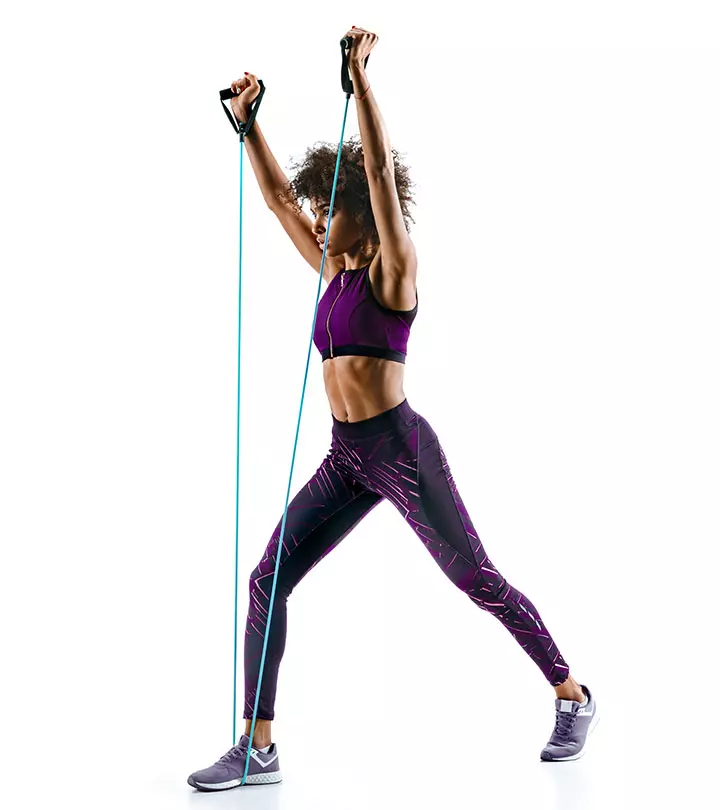


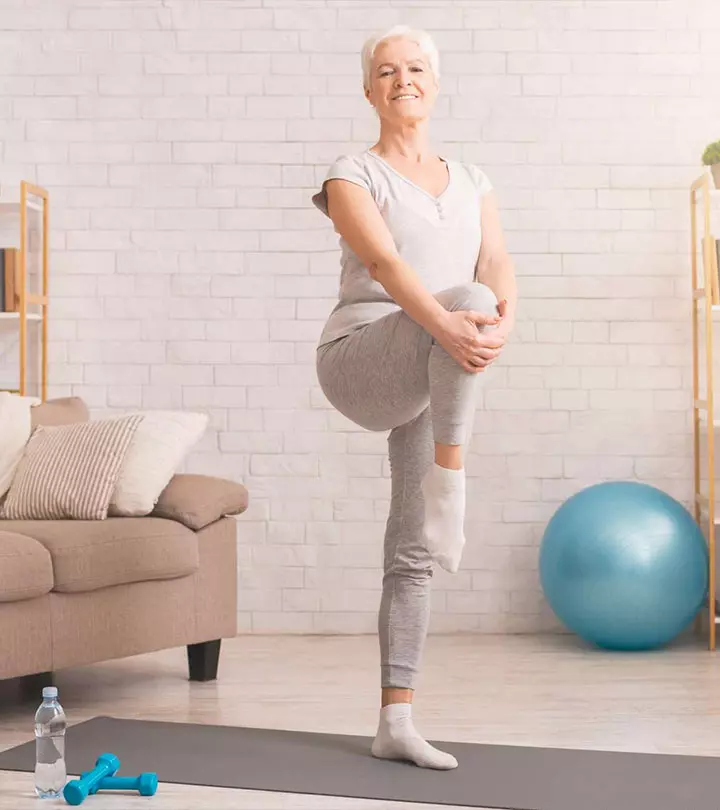




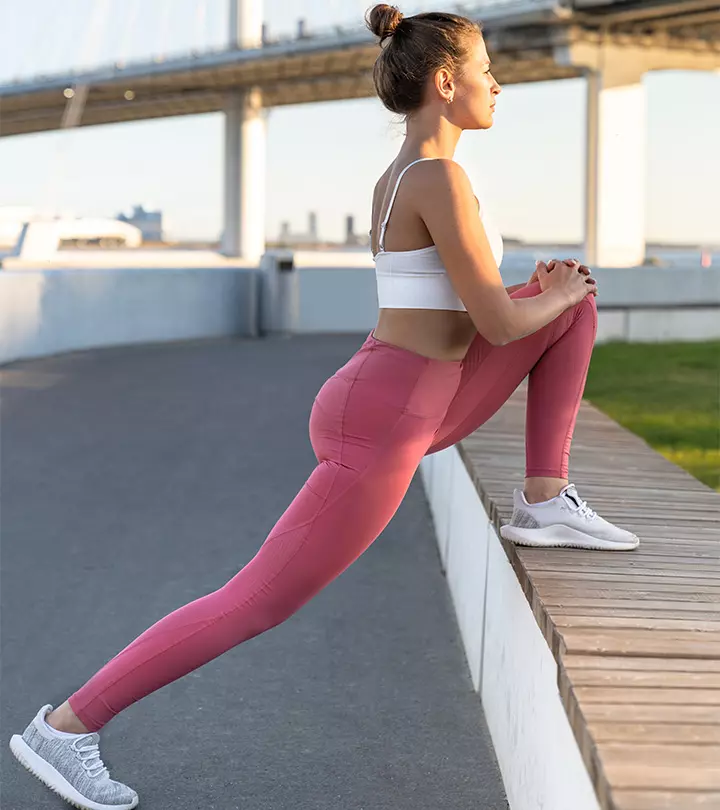
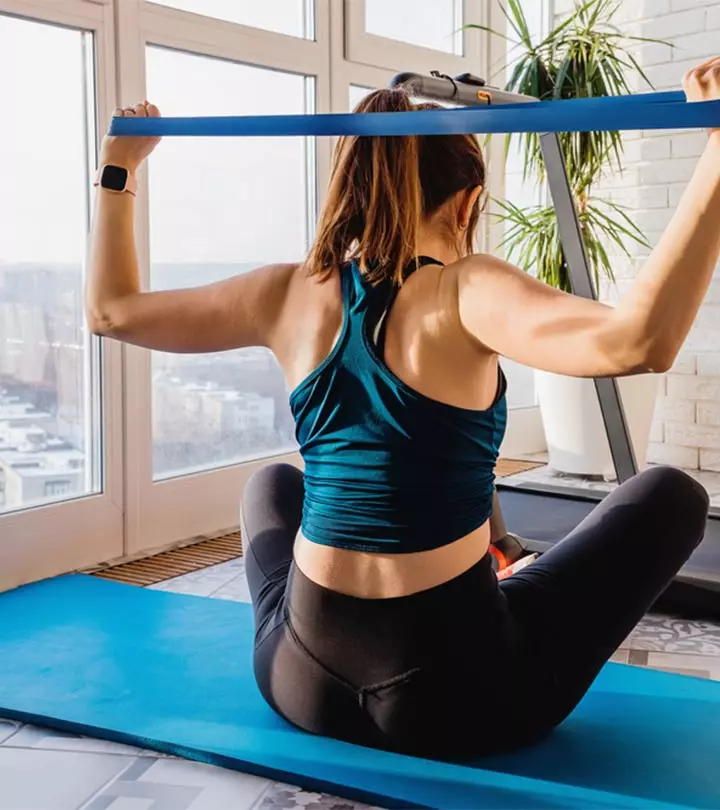


Community Experiences
Join the conversation and become a part of our empowering community! Share your stories, experiences, and insights to connect with other beauty, lifestyle, and health enthusiasts.